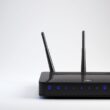Looking for tips on how to keep your MacBook battery healthy? Yes, the battery in your MacBook has a limited lifespan, but by following a few simple procedures, you can optimize its lifespan and daily use hours.
When it comes to MacBook batteries, it’s no longer as simple as it was a decade ago. And that’s because many of us are now using these sealed laptops with physically smaller batteries. On those, we have external monitors going. Those monitors have also been charging the laptops throughout the last few years.
If you do this, you are not allowing the battery to go completely dead. Instead, you are charging it intermittently, a small amount at a time. We used to have NiCad batteries that degraded with time a long time ago, but this is no longer a problem in our day and age.
The old and out-of-date information is out of the way. So, now let’s talk about what you can do to extend the life of your computer’s battery as much as possible.
Expert tips on how to keep your MacBook battery healthy
- 1. Make use of “Optimized Charging”
- 2. It is best to avoid high temperatures
- 3. Make sure your MacBook isn’t left plugged in all of the time
- 4. Do not fully charge the MacBook
- 5. Make use of the Safari web browser
- 6. Dimming your display and video streaming optimization may both help you save battery life
- 8. Install the most recent version of macOS on your device (if you’re using a new one)
- Wrapping Up
1. Make use of “Optimized Charging”
To optimize charging behavior, MacBooks include a feature called Optimized Charging, which tracks your use patterns and modifies charging behavior as needed. The sweet spot for a laptop’s lithium battery is anywhere between 80 and 40% capacity when it comes to long-term health. When it comes to cell health, charging to 100% or allowing your battery percentage to drop too low are both considered bad ideas. As the voltages in a battery increase with full capacity, so does the strain on its cells.
When it comes to extending battery life, the experts at Battery University propose that “a device must include a “Long Life” mode that keeps the battery at 4.05 V/cell and delivers a [state of charge] of around 80 percent.” Apple is one of several firms that have embraced similar charging methods, including others.
![How to Keep Your MacBook Battery Healthy [7 Expert Tips] 5 MacBook Battery Healthy - optimised battery charging](https://www.digitub.org/wp-content/uploads/2021/12/MacBook-Battery-Healthy-optimised-battery-charging.jpg)
Under System Preferences > Battery > Battery, you will see this option. Once your Mac has gotten to know your daily routine, it will wait before fully charging your device, allowing it to spend less time at 100%. macOS Catalina was the first operating system to have the mode. Therefore, if you’re attempting to upgrade but your Mac isn’t compatible with this version of the operating system, you’re out of luck.
2. It is best to avoid high temperatures
Your Mac has been engineered to operate efficiently in a wide variety of temperature conditions. The recommended temperature range for your Mac or MacBook is between 62° and 72°. When your Mac is exposed to and charged at extreme temperatures (over 95°), the battery capacity may be reduced or even destroyed. Don’t let the device get exposed to sunlight if you want to keep your MacBook battery healthy for a long time.
Use your device in very cold temperatures, and you may notice a reduction in battery life. But that is usually transient. As the battery returns to its typical working range, the gadget’s performance will return to normal as well.
3. Make sure your MacBook isn’t left plugged in all of the time
Keep in mind that keeping your MacBook battery connected will not result in an “overcharge.” Leaving it plugged in all the time will not harm the battery or any other parts. The only exception is if you observe the battery bulging, which is a major issue that might endanger you. So, if you notice this, contact Apple immediately.
The previously stated, optimized charging option helps alleviate some of the pain associated with keeping your laptop plugged in, but it is not without its limitations. You may be unable to determine the best time for macOS to postpone charging your battery if your laptop is always on your desk or your schedule is unusually unpredictable.
4. Do not fully charge the MacBook
Seeing 100% on the menu bar is comforting, but MacBooks aren’t built to run on full battery for lengthy periods. This is one thing that many people get wrong when trying to find solutions to “how to keep your MacBook battery healthy.” Did you ever think that the 100% mark is good for your battery? Nope, it’s not.
Apple suggests charging your iPhone at 50 percent of its capacity regularly, stating that keeping your device at full capacity for a lengthy period of time might result in reduced battery life.
Don’t allow the battery to deplete to a dangerously low level of capacity.
Don’t overcompensate in any way. It’s just as dangerous to let the battery run out of juice as it is to keep it at full power for a long period of time. Total discharge is more likely to occur when the capacity is lower when you shut down for a period of time. It is possible to consider anything below ten to be in peril.
Storage of a gadget with its battery entirely depleted has the potential to cause the battery to enter a deep discharge condition, making it incapable of retaining a charge.
5. Make use of the Safari web browser
If Google Chrome is your primary web browser, you should consider switching to Apple’s Safari web browser. To put it another way, Chrome is a well-known memory eater that, in turn, drains a laptop’s battery.
Using Safari as the default web browser, Apple calculates the battery life predictions for its MacBook. When browsing the web, Safari is a powerful tool that you should try out if you haven’t already.
6. Dimming your display and video streaming optimization may both help you save battery life
The most significant drain on battery resources is the powering of the display. So, first and foremost, let us a review: Increase or decrease the brightness of your monitor to a level that is pleasant for your eyes. The greater the brightness of your display, the shorter the battery life. By selecting System Preferences > Battery from the Apple menu, you can also configure the display to dim somewhat while using battery power and turn it off after a period of inactivity.
You may choose to have the screen slightly dimmed while you’re using battery power, which will help to decrease battery consumption when streaming video on battery power. We also recommend that you customize the length of time that your display will be on for as little time as possible. You may save battery life by fully turning off your MacBook’s screen whenever your focus is elsewhere.
8. Install the most recent version of macOS on your device (if you’re using a new one)
Some older MacBook models have been reported to experience battery fluctuation and draining problems since the release of macOS Sierra (10.12).
It looks like updating your Mac’s operating system might reduce its battery life, but this is not always the case. In the short term, it may be better to continue with your existing operating system on older devices before upgrading to a newer one. It is recommended that they be updated to the most recent version of macOS on the latest devices since upgrades often feature optimization adjustments.
Wrapping Up
In the end, the battery life of your MacBook is determined by how you use it. So, if you are looking for tips on how to keep your MacBook battery healthy for a long time, follow the methods explained in this post. While we can’t give an exact number of months or years that your battery will last longer with these solutions, we can guarantee that they will increase your battery’s overall lifespan.



